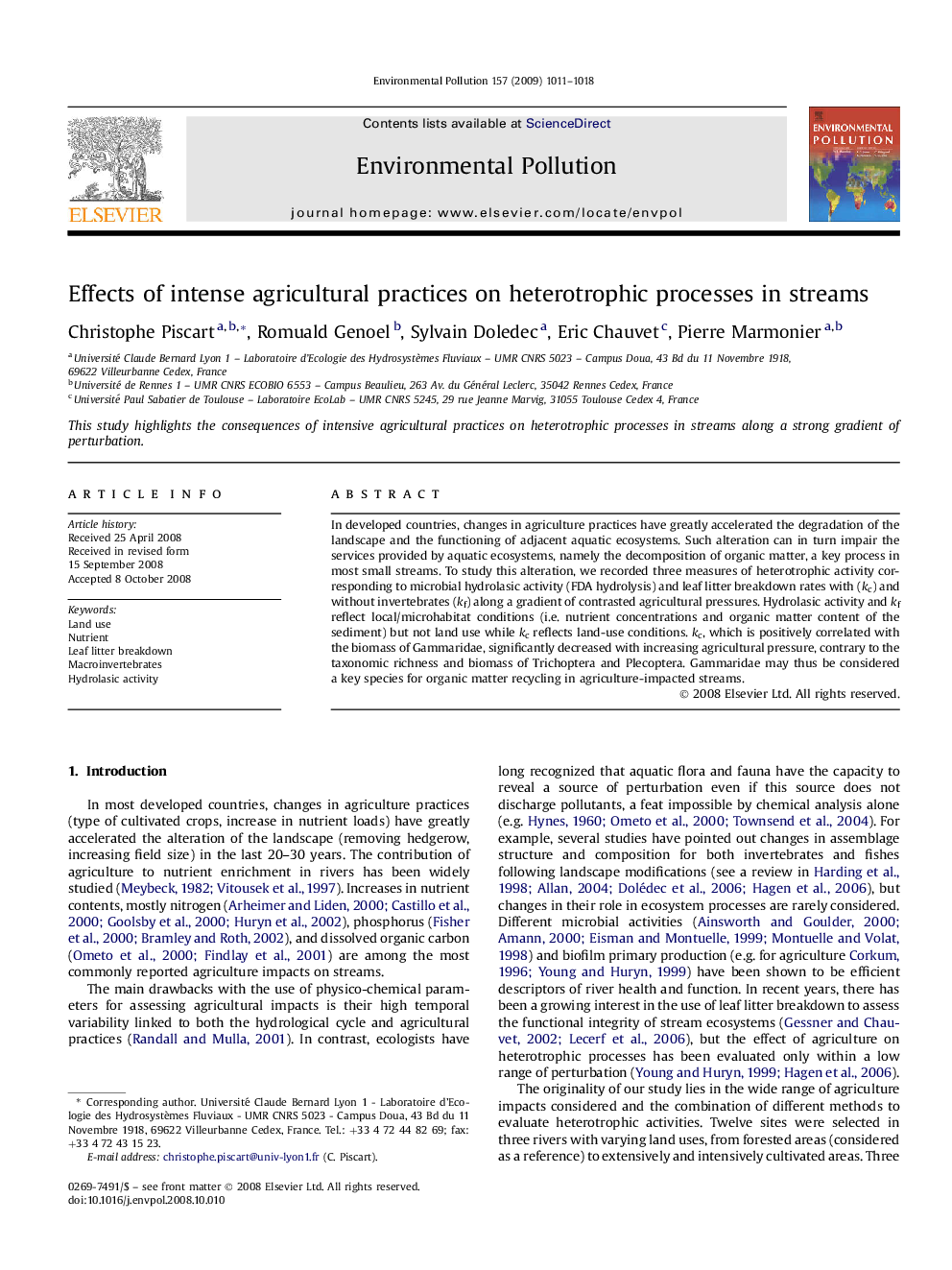| Article ID | Journal | Published Year | Pages | File Type |
|---|---|---|---|---|
| 4426615 | Environmental Pollution | 2009 | 8 Pages |
In developed countries, changes in agriculture practices have greatly accelerated the degradation of the landscape and the functioning of adjacent aquatic ecosystems. Such alteration can in turn impair the services provided by aquatic ecosystems, namely the decomposition of organic matter, a key process in most small streams. To study this alteration, we recorded three measures of heterotrophic activity corresponding to microbial hydrolasic activity (FDA hydrolysis) and leaf litter breakdown rates with (kc) and without invertebrates (kf) along a gradient of contrasted agricultural pressures. Hydrolasic activity and kf reflect local/microhabitat conditions (i.e. nutrient concentrations and organic matter content of the sediment) but not land use while kc reflects land-use conditions. kc, which is positively correlated with the biomass of Gammaridae, significantly decreased with increasing agricultural pressure, contrary to the taxonomic richness and biomass of Trichoptera and Plecoptera. Gammaridae may thus be considered a key species for organic matter recycling in agriculture-impacted streams.
